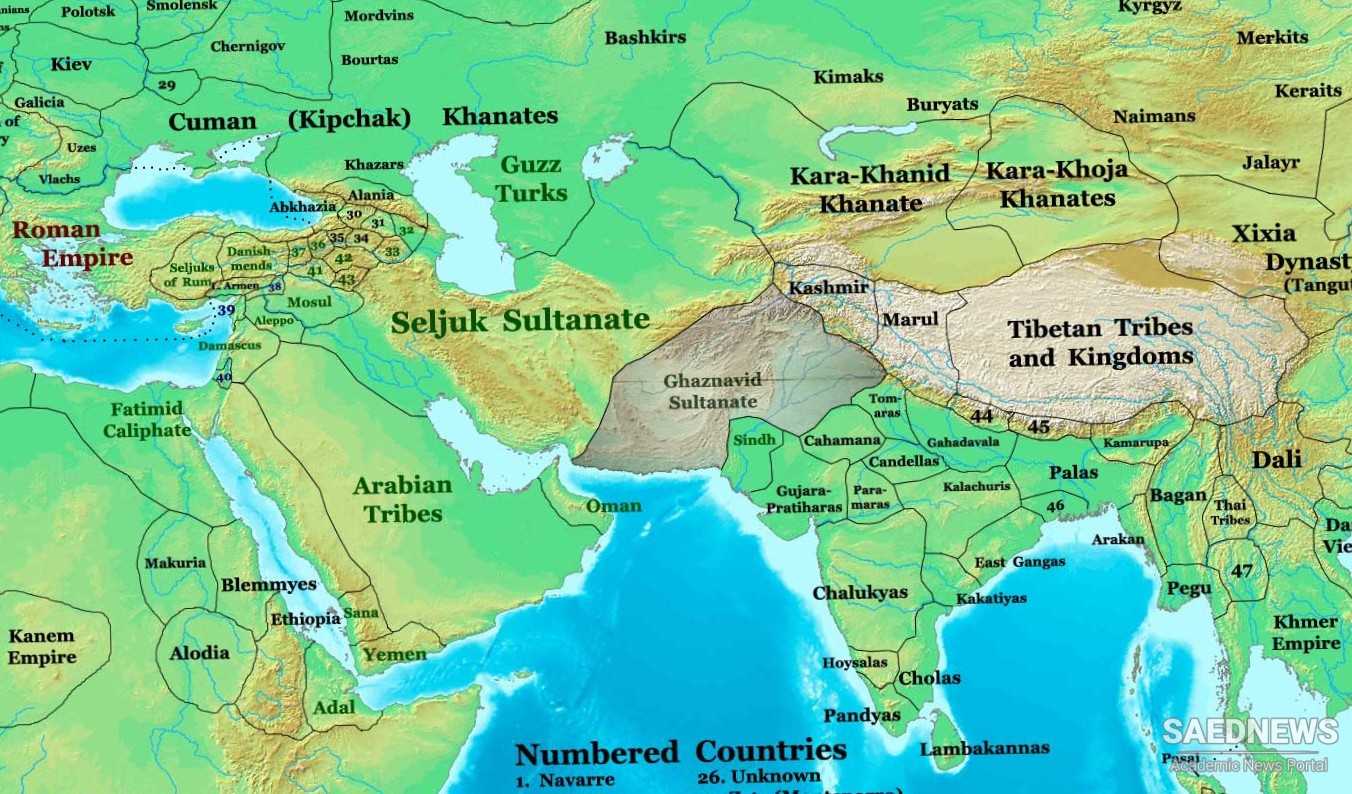Protected by the lofty Alburz mountain range they escaped the main thrust of the Arab conquering armies as they advanced eastward into Khurasan. Early Arab invasions were only partially successful. In the year 30/650-1, under the caliph 'Uthman, Sa'id b. al-c As entered Gurgan, the province touching the southeastern coast of the Caspian Sea, and imposed a tribute on its ruler. From there he marched westward to conquer parts of Tabaristan.
These conquests were lost again during the struggle between 'Ali and Mu'awiya for the caliphate, and the tribute for Gurgan was frequently withheld. Mu'awiya soon after gaining sole possession of the caliphate in 41/661 sent Masqala b. Hubaira to subjugate Tabaristan, but he and his army were annihilated in Ruyan to the west of Tabaristan. In the years 61-4/680-3 an attempt to conquer Tabaristan resulted in a defeat of the Kufan general Muhammad b. al-Ash'ath al-Kindi. Gurgan was not brought under Muslim rule until 98/716-17, when Yazid b. al-Muhallab defeated the Chol (Ar. Sul) Turks of the Dihistan steppes north of the Atrak river, who had taken the country from its marbdn Firuz b. Qul, and built the town of Gurgan (near modern Gunbad-i Qabus) which became the capital of the Muslim province. Yazid's further attempt to conquer Tabaristan ended in failure, and he was forced to leave the country after concluding a truce.
Tabaristan, the most developed and populous of the Caspian provinces, at this time was ruled by a dynasty of Ispahbads known after their ancestor Dabuya as Dabuyids with their capital in Sari. They bore the titles Gllgllan, Padashwargarshah (Patashwargar being the old name of the mountains of Tabaristan; later distorted as Farshwadgarshah), Ispahbad of Khurasan, said to have been conferred upon them by the last Sasanian king Yazdgard III, and claimed descent from the Sasanian Peroz through his son Jamasp. The early history of the dynasty is, however, shrouded in obscurity. The first mention of an Ispahbad ruling Tabaristan in a reliable report concerns the year 79/698. Coins minted in the names of the Dabuyid Ispahbads are known only from 711. They are dated in a post-Sasanian era beginning in 651. Statements in the later sources that their ancestors before the rise of Islam ruled in Gilan may be merely an attempt to explain their title Gilgllan.
The fact that Tabaristan in early Islamic times harboured beside the Ispahbads other dynasties of Padhghospans and Ustandars has been interpreted as reflecting an attempt to reconstitute the higher Sasanian administrative hierarchy there, perhaps at the time when Peroz, the son of Yazdgard III, hoped to restore the Persian empire. The use of these titles in Tabaristan as names and designations appears, however, only much later. Their adoption among the rulers seems rather to attest the survival of Persian national sentiments, which also encouraged the preservation of the title Ispahbad long after the overthrow of the Dabuyids by the Muslim conquest. The region of Mount Damavand in the same period was ruled by a dynasty bearing the title Masmughan ("Great one of the Magians") indicating a religious function. Another dynasty of Masmughans is mentioned in the area of Miyandurud in eastern Tabaristan.


 The Reign of Shapur II: The Culmination of Sassanian Power
The Reign of Shapur II: The Culmination of Sassanian Power














































